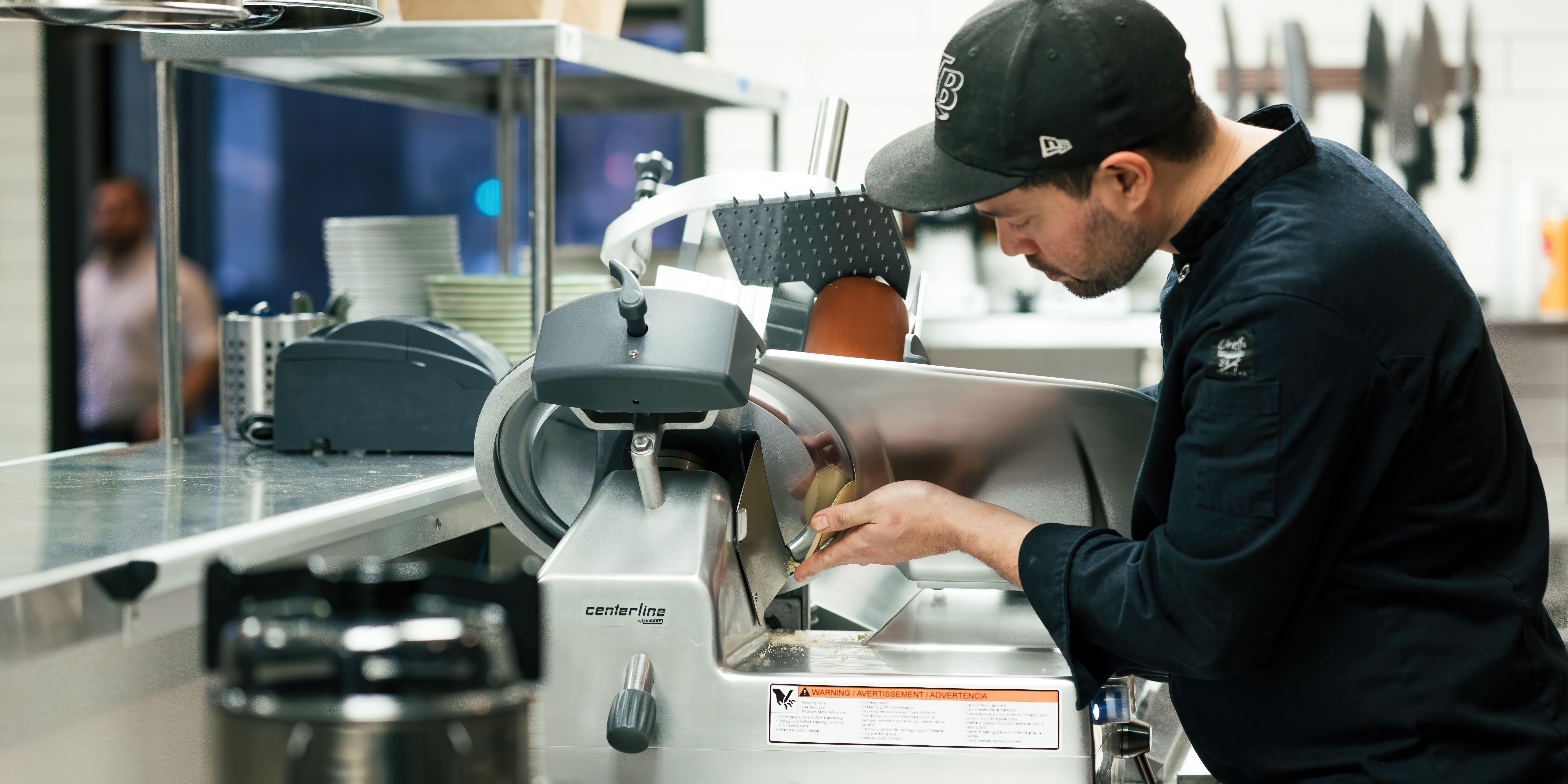K-12 kitchens face challenges both in terms of time and resources. Obtaining and retaining the best possible employees factors into the efficiency of day-to-day operations, which can detract focus from menu planning and food preparation — particularly for from-scratch items.
That can be difficult for K-12 kitchens who strive to meet students’ demands for more customized and unique offerings. Students today tend to have more sophisticated palates than in years past, with more visiting restaurants at a younger age. Students prefer fresh foods, which can place a burden on K-12 kitchens that may not have as qualified staff to operate food prep equipment like Hobart HS Series slicers to produce freshly sliced meats, cheeses and vegetables for their recipes.
Training is key. Depending on the size of the school and the volume of product being sliced, K-12 kitchens may opt for either a manual slicer or automatic slicer. Automatic slicers tend to be more prevalent in bigger schools where food service employees are feeding a larger population.
Whichever the choice, there are key tips to gaining operator confidence and high-quality results when using a manual slicer or automatic slicer — even for K-12 staff who may be less experienced.
1. Look for a slicer with zero-knife exposure. One of the best paths to operator assurance is using a slicer a with a removable blade and a tool that completely encases the knife during removal. That allows the blade to be cleaned with minimal interaction. It also supports proper cleaning and sanitation since the whole area around the knife and the knife itself can be cleaned. This is an advantage compared to flossing the knife, as schools strive to adhere to strict cleaning guidelines.
2. Wear gloves. When operating a manual slicer or automatic slicer, wear heavy-duty, slice-proof gloves as added assurance to supplement operator assurance features on the equipment.
3. Follow the proper steps for slicing*. For manual slicing, pull the product tray to the home position, toward the operator until it stops. Raise the grip, place the product to be sliced against the gauge plate on the product tray and lower the grip against the product. Turn on the slicer and adjust the gauge plate to the desired thickness for the slice. Use the product tray handle to slide back and forth to slice.
4. Complete slicing according to operation recommendations. When finished slicing, pull the product tray to the home position and always remember to turn off the slicer.
5. Slice productively and efficiently. Using slicers properly can bring labor savings and versatility to the K-12 cafeterias and K-12 schools. Use the equipment to slice not only fresh meats, but also cheeses and vegetables. Never slice any product that is frozen or meat with bones in it. Both can jeopardize operator assurance, compromise cut quality or even shorten the life of the equipment.
6. Clean and sanitize the Hobart HS slicer thoroughly. Always unplug the slicer prior to cleaning and sanitizing. For slicers with a removable blade, align the pins on the knife removal tool to the slots on the knife ring guard, push the tool entirely into the hub and turn counterclockwise to remove the blade. This blade, as well as any other removable parts can be washed in a sink with mild soap and water. Wipe down the remaining parts of the slicer with a soapy towel. Slicers with a tilting, removable carriage make cleaning even easier and allow for the removal of debris between full cleanings.
7. Follow a maintenance schedule. Slicer inspection and maintenance should be performed by the manufacturer or authorized service agent every six months.
For the 43% of K-12 kitchens who cite regular use of a slicer as part of their operation, this equipment can help tailor fresher, more unique offerings for students. And it can help make the job of fresh food preparation easier, which is welcome when time is of the essence.
This article is one of a three-part series providing tips on food prep equipment to K-12 kitchens. The other two articles focus on Hobart mixers and Hobart food processors.
Sources
1K-12 study by Technomic prepared for ITW, January 2020. Page 18.
2 These instructions are for Hobart HS Series Slicers. Follow the same steps for automatic slicing, and then lift manual/auto lever to automatic mode to begin.
About the Author
.jpg?width=67&height=67&name=Bilger%20Carolyn%201%201x1-2_%20(002).jpg) Carolyn Bilger is the marketing director for Hobart – Food Preparation Products. She has been with Hobart since 2015 and sets the strategy for marketing and new product development for the full line of Hobart food preparation equipment. See all her blogs here.
Carolyn Bilger is the marketing director for Hobart – Food Preparation Products. She has been with Hobart since 2015 and sets the strategy for marketing and new product development for the full line of Hobart food preparation equipment. See all her blogs here.











